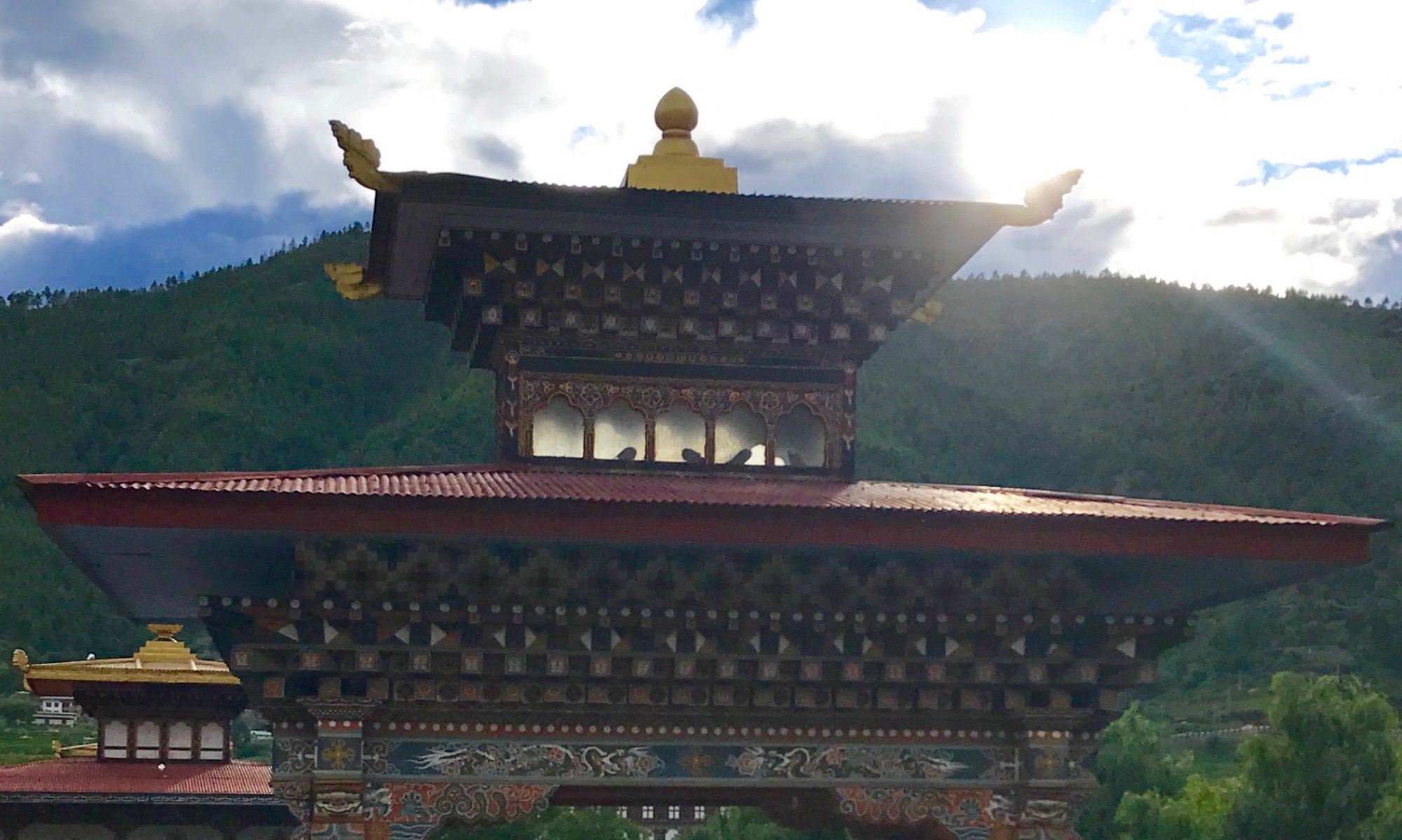Despite the beauty of the courtyard,
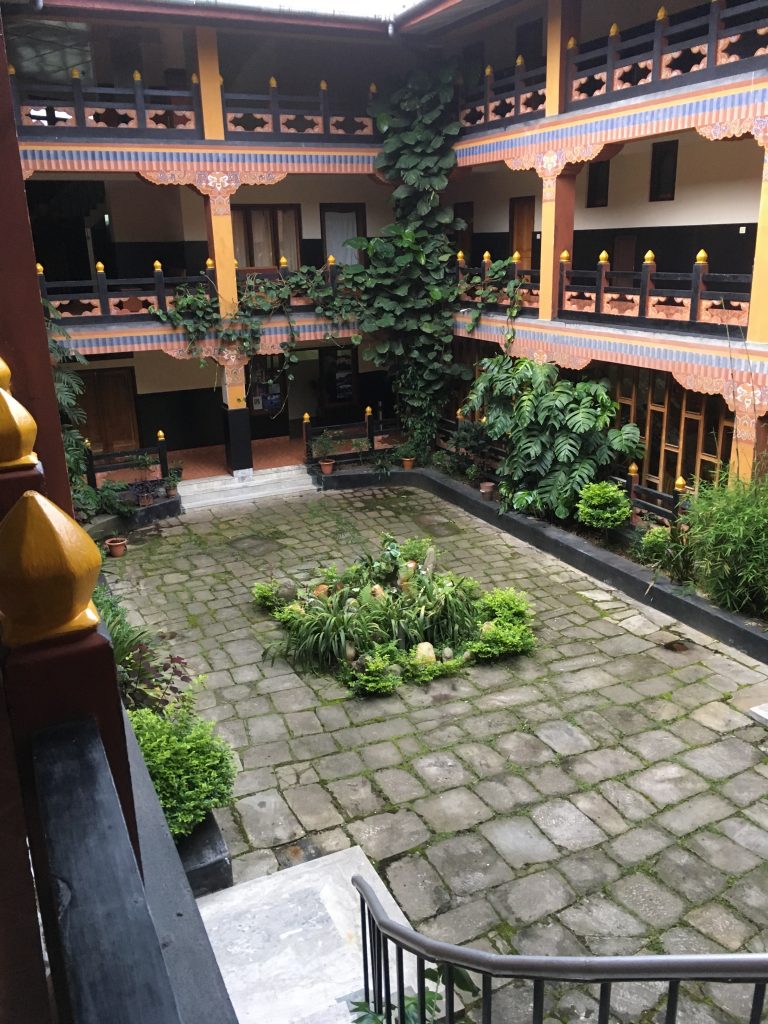
we had breakfast out on the deck of the hotel, looking down over lush fields. 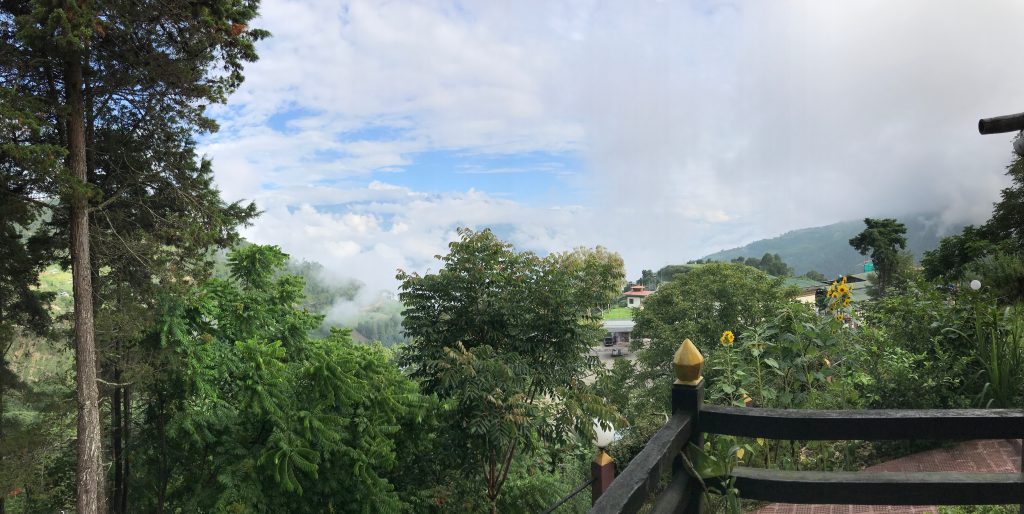
Then it was back into the car. In the end, it took us over 4 hours to make it from Mongar to Kanglung.
I was amused by this sign proclaiming the “junior engineer.”
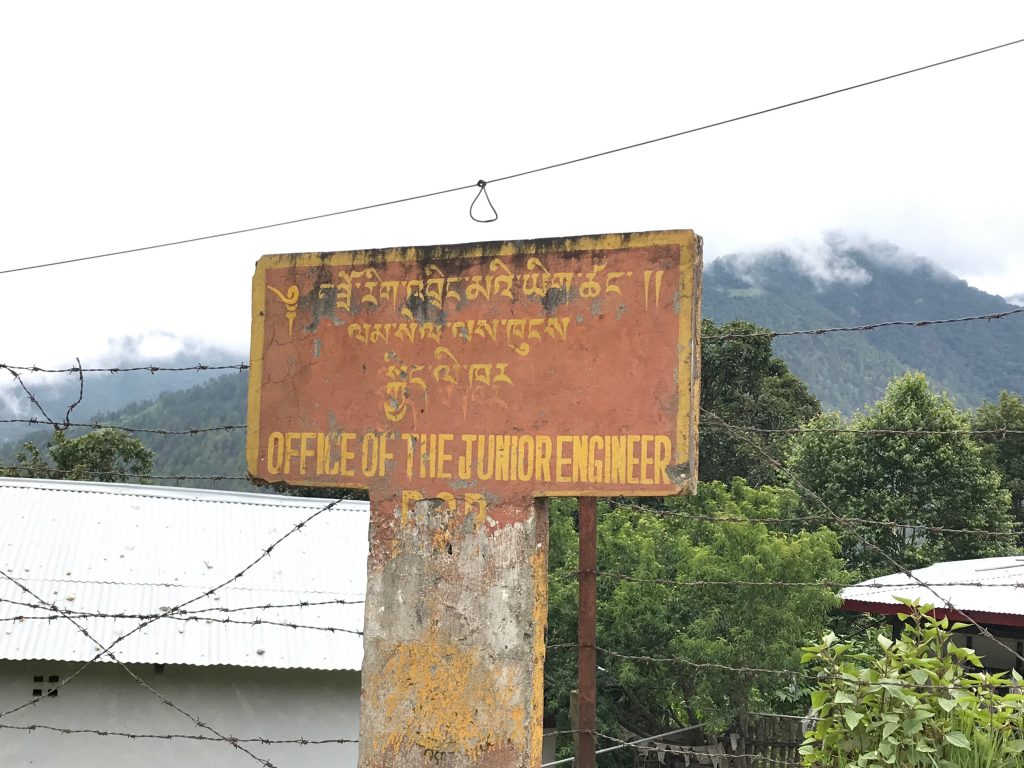
But perhaps a senior engineer would have taken a road somewhere other than through this crazy landslide-ridden overhang. Three photos, from closest to farthest, might provide context:
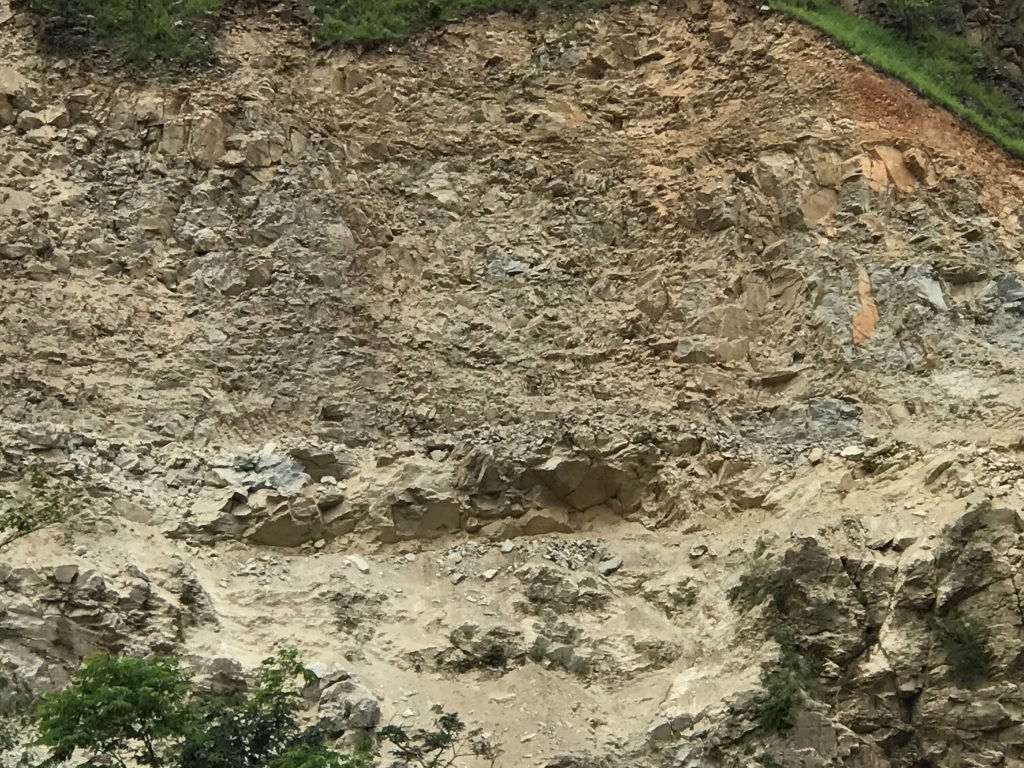
It doesn’t look like there’s enough space for a car to fit, does it?
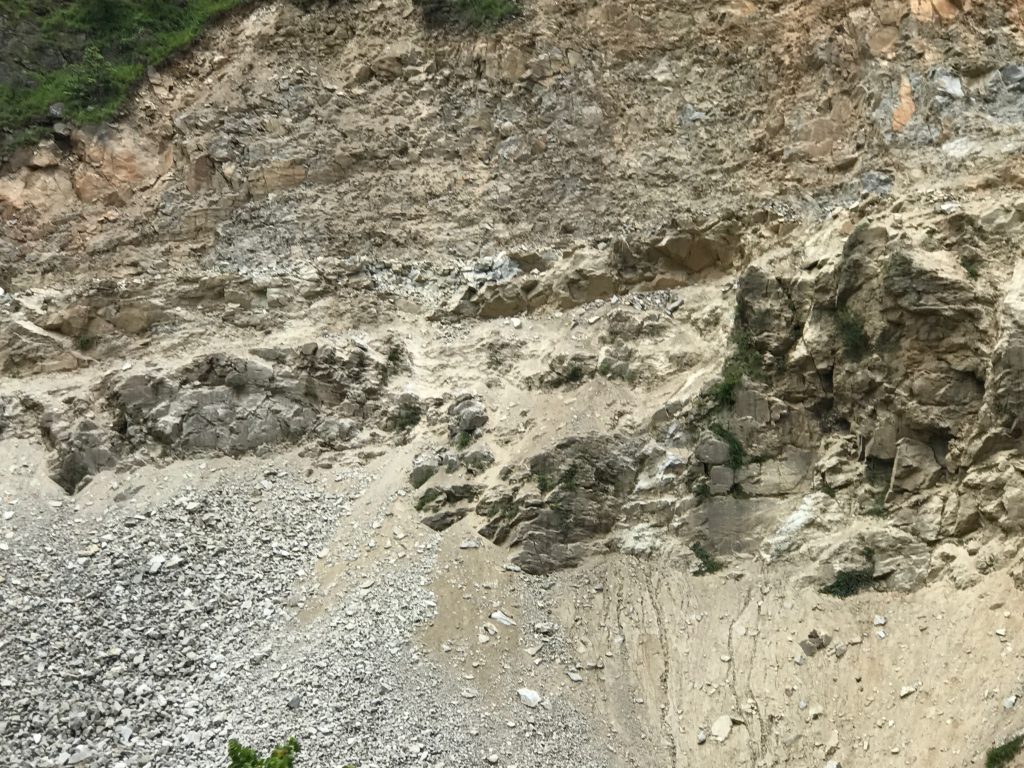
I’m still not seeing it, except we’re already through, looking back from the side of the next mountain.
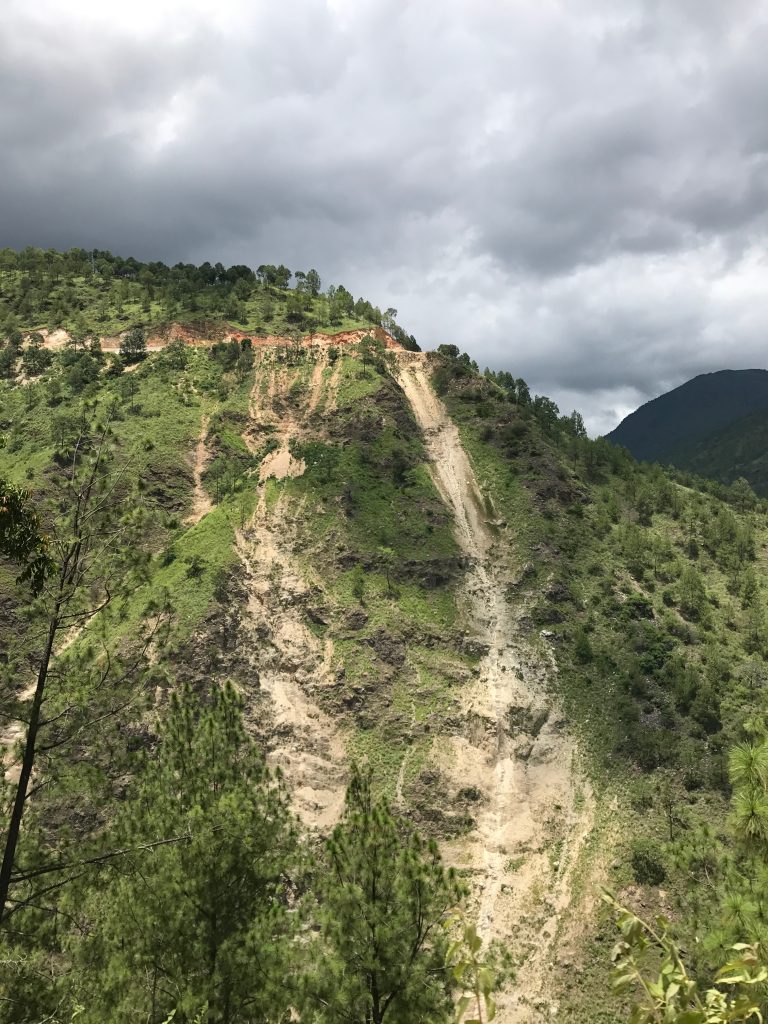
This is the top edge of that cliff: the easy part to drive.
Mostly, though, we followed the river.
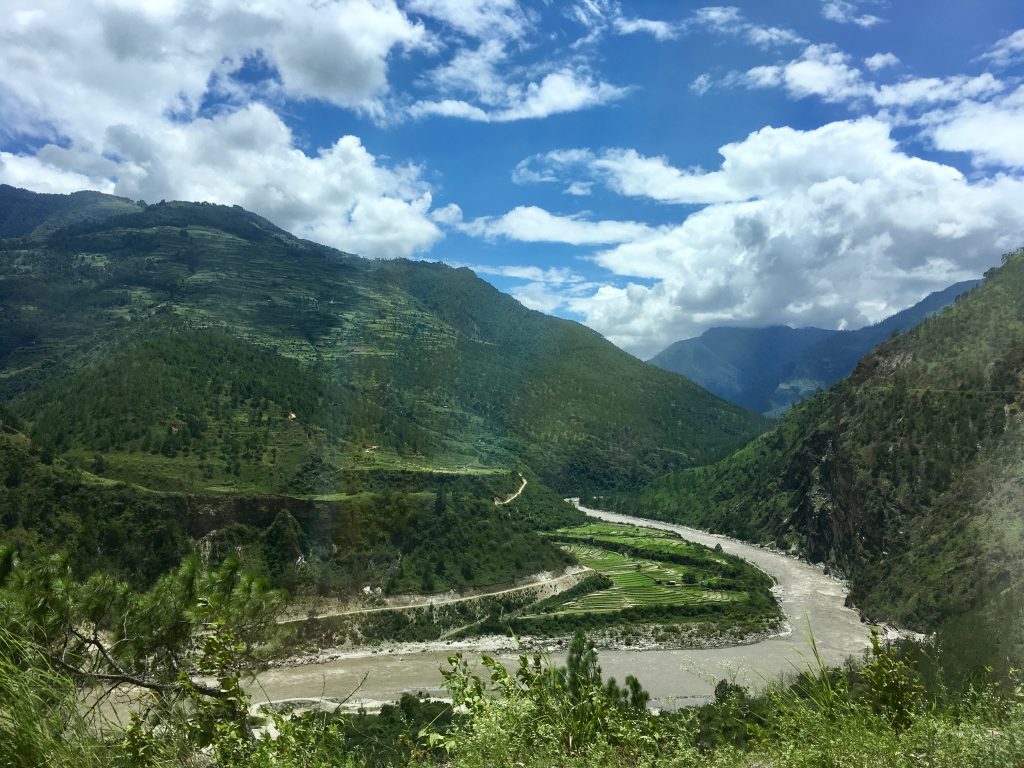
The bridge over the river (below) marks the border of Trashigang province, where we had to stop in at another checkpoint—we were sweltering in the heat, suddenly.
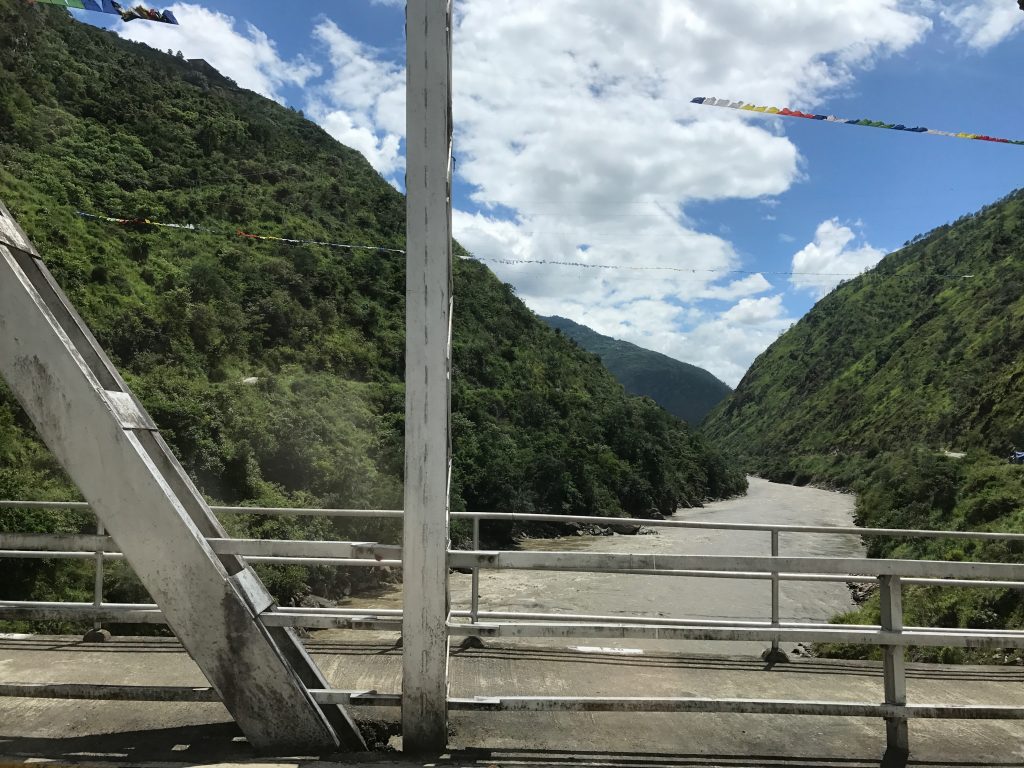
Then we were again on (mostly) paved roads, with only another hour-long wait for road work on the climb up through a side valley toward Kanglung. As we climb toward Kanglung, Ugyen explains what was “risky” about taking the India road: a bus had killed some Indian people in Assam, and a Bhutanese driver had been (unfairly?) blamed. There had been riots in response, and a Bhutanese driver attacked by a mob. (Ugyen was not the only one telling us the India road was risky—but Ugyen had earlier described corruption (demand for bribes at the borders) as a reason for not taking the India road.)
Meanwhile, we were noticing that these hillsides were not very heavily populated.
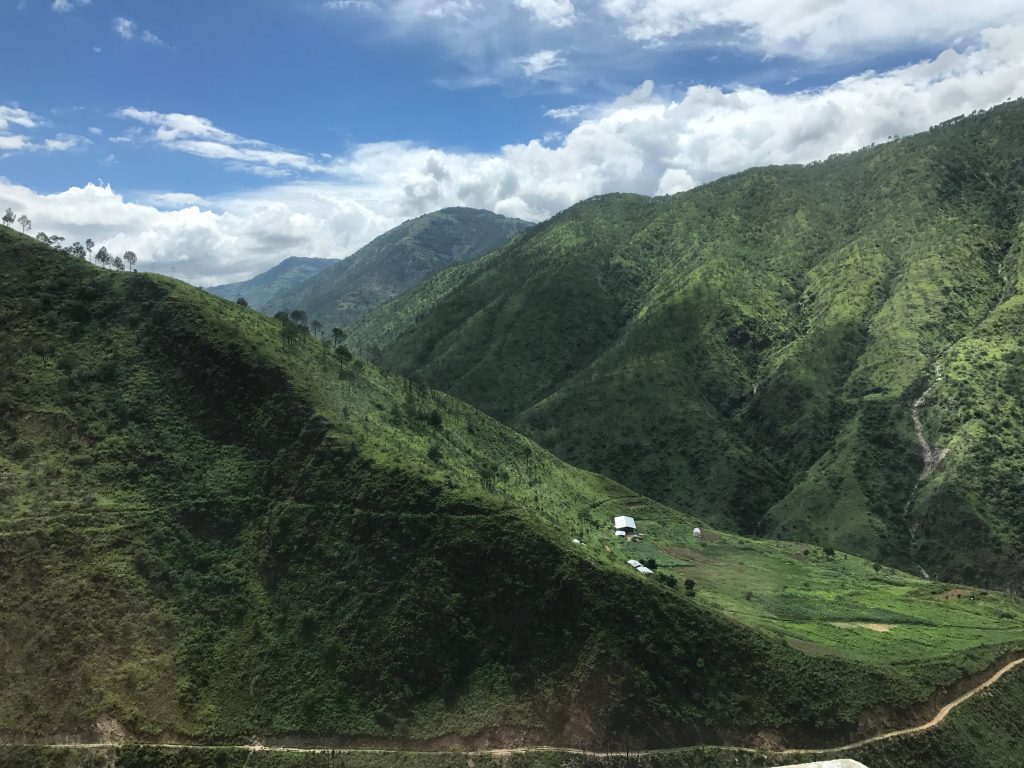
Later, Ugyen spotted some edible fruit, so he stopped and climbed the hill to pick some. He shared a berry with James, who was not impressed. The rest of us were then too scared to try it. (Later, in the market, I would ask about a mango-sized fruit and Ugyen would tell me it was the same fruit, now mature. “But you can’t eat it now, madam. Oooh, too sour.”)
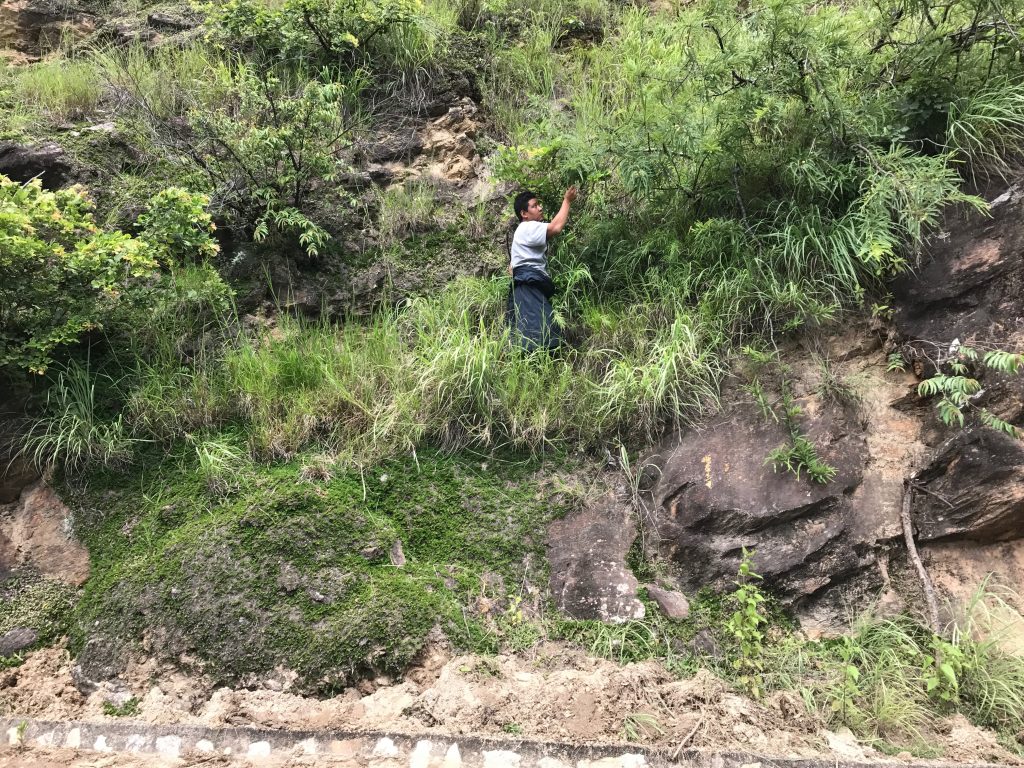
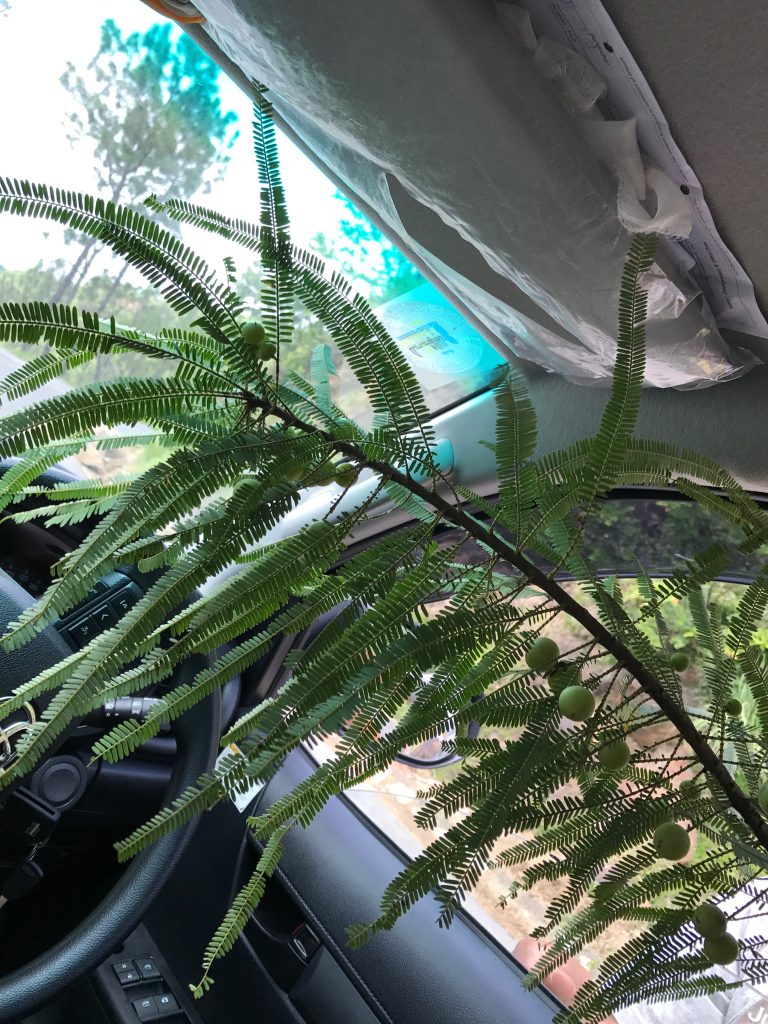
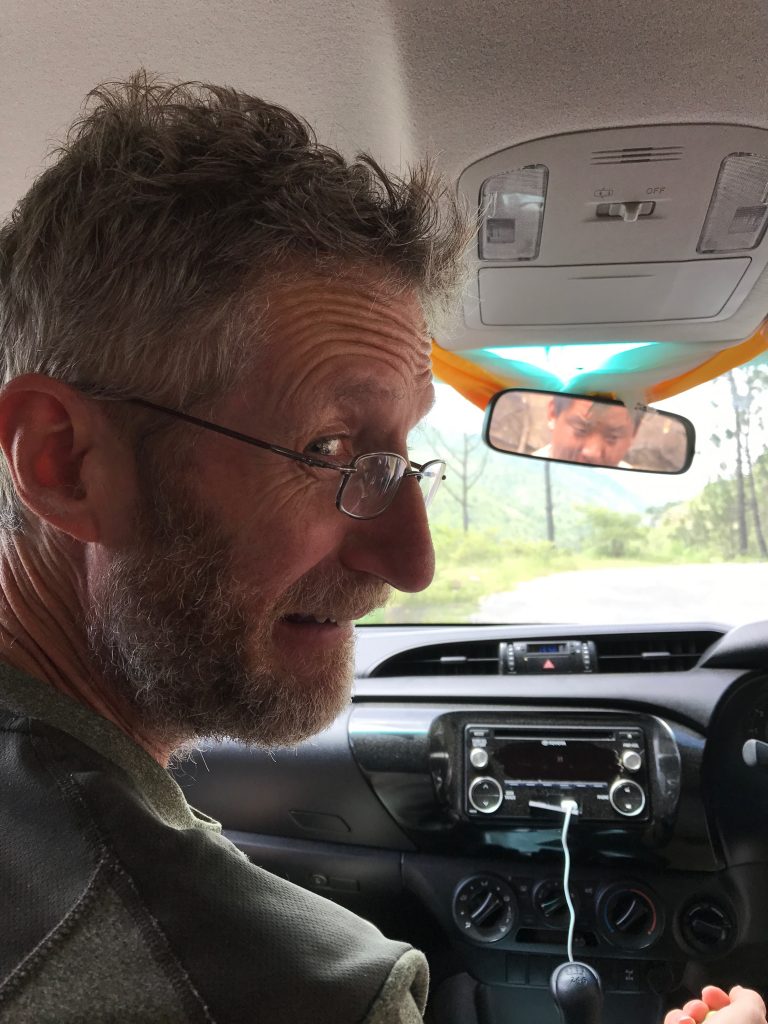
Then, suddenly, we were arriving! Ugyen said they had found us a big house, and he would go and help us settle in. Other men appeared to help unload our many bags. The college’s head of facilities, Ngedrup, came to see how we were—he had tried to chill some soft drinks to welcome us, but they had frozen stiff—but he had also chilled some water, which we shared. This was the house of the previous provost, he informed us, and I was very impressed. The provost had left to become a monk, he said, and I wondered if the state of the house was a sign of that prior resident’s indifference to the things of this world. (It took several more days for me to learn that “provost” here does not mean chief academic officer, but rather something like a house dean.) To reach the house, we had to walk through one of the women’s dorms (here called hostels), past drying underwear, young women washing their hair under a public pump.
Then Ugyen drove us to get some basic food things so that we could cook some supper (they also offered to treat us at the College canteen—but the timing didn’t work with an influx of students expected right around when we were hoping for supper). We also stopped by Jeremy’s future school, to spin the prayer wheel briefly.
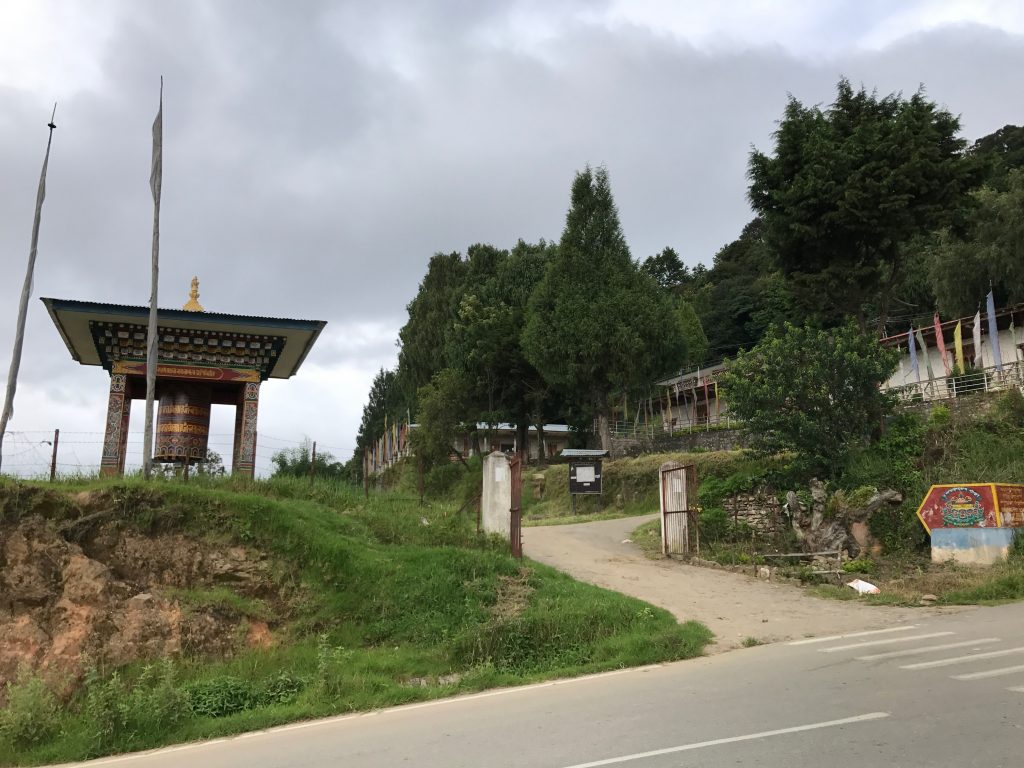
So then, there we were! Time to settle in.
Unfortunately, the house itself was a bit of a blow. The kitchen in particular was just depressing.
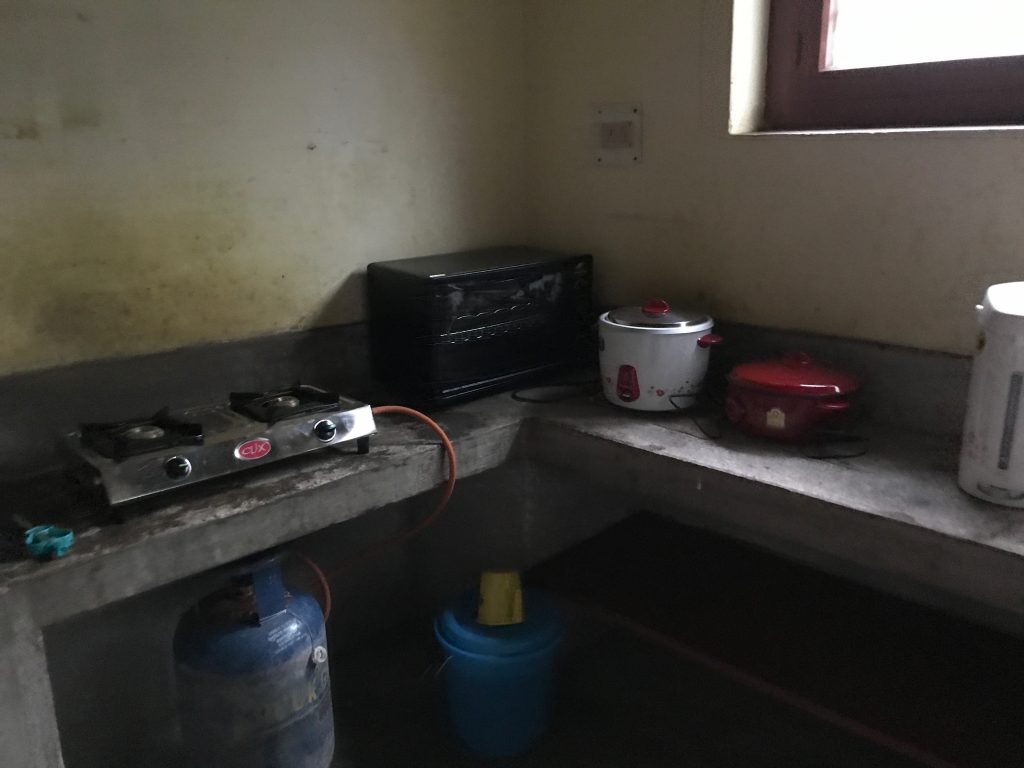
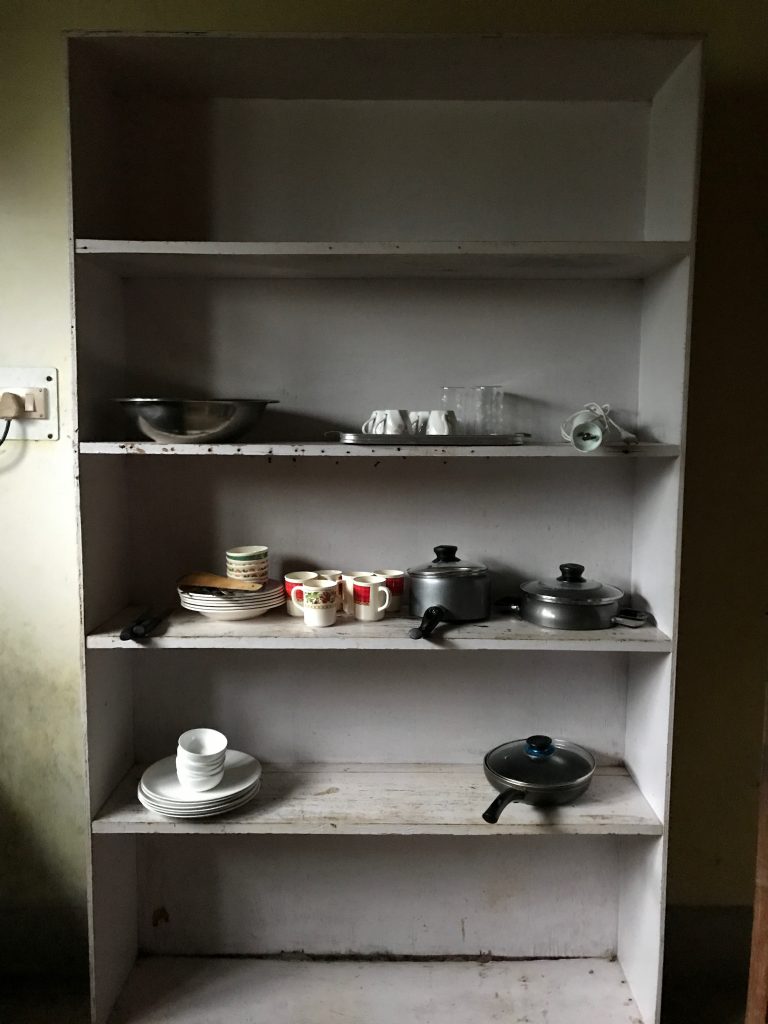
The main living area was… quirky?
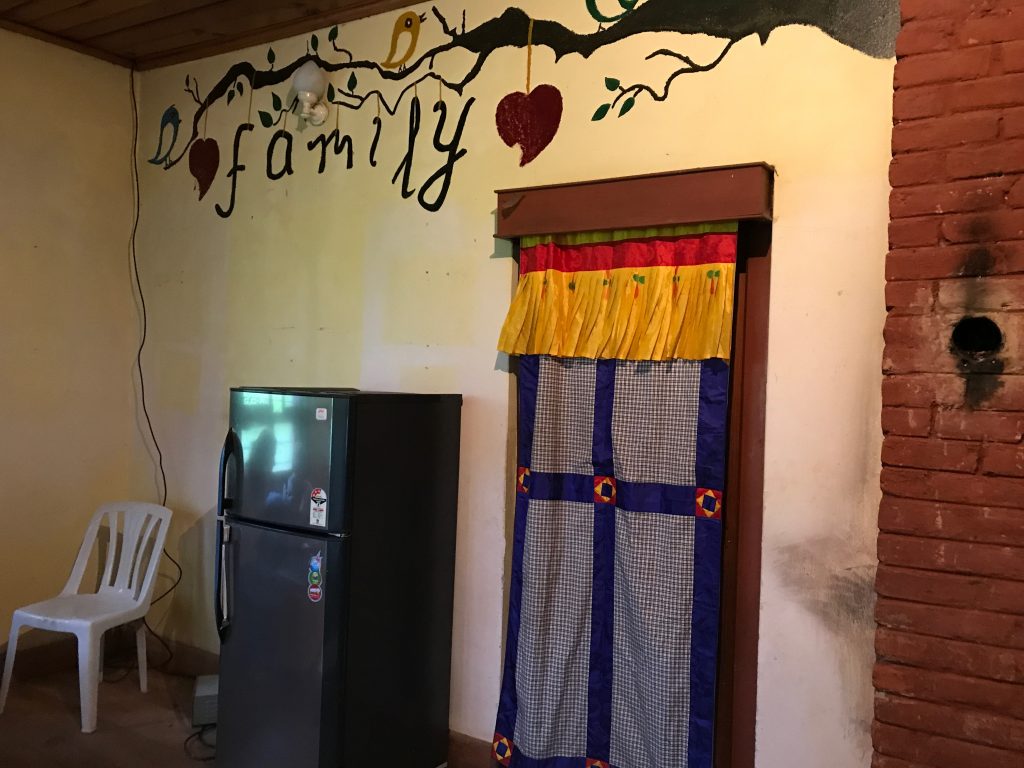
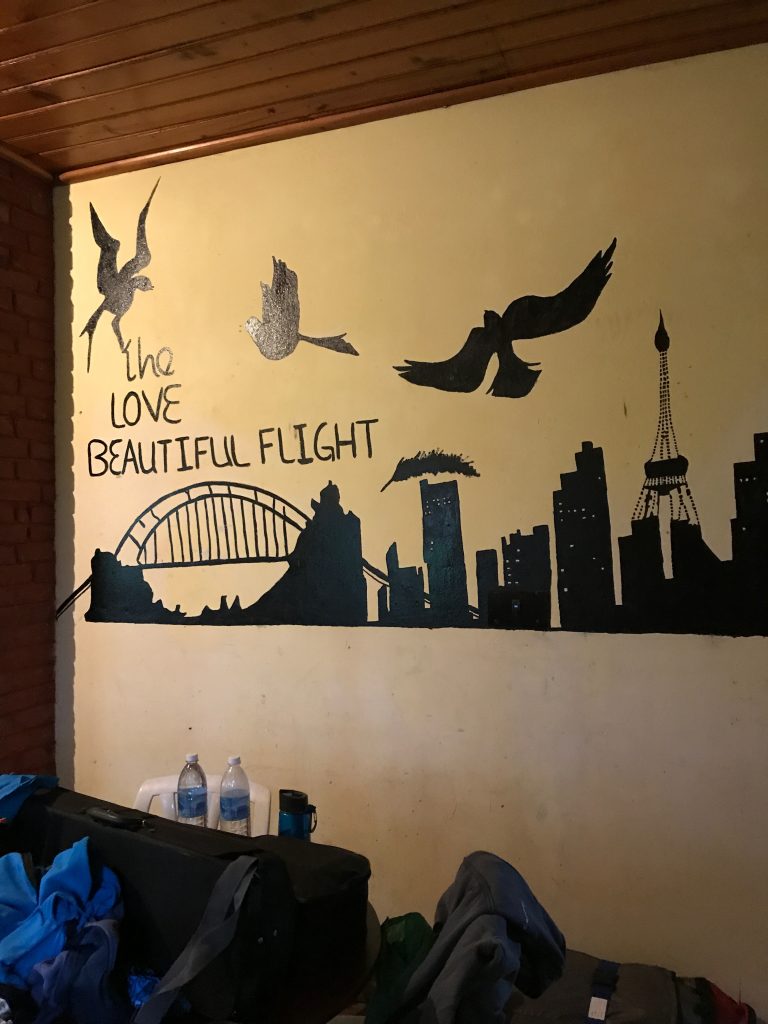
The bathrooms… uninspiring.
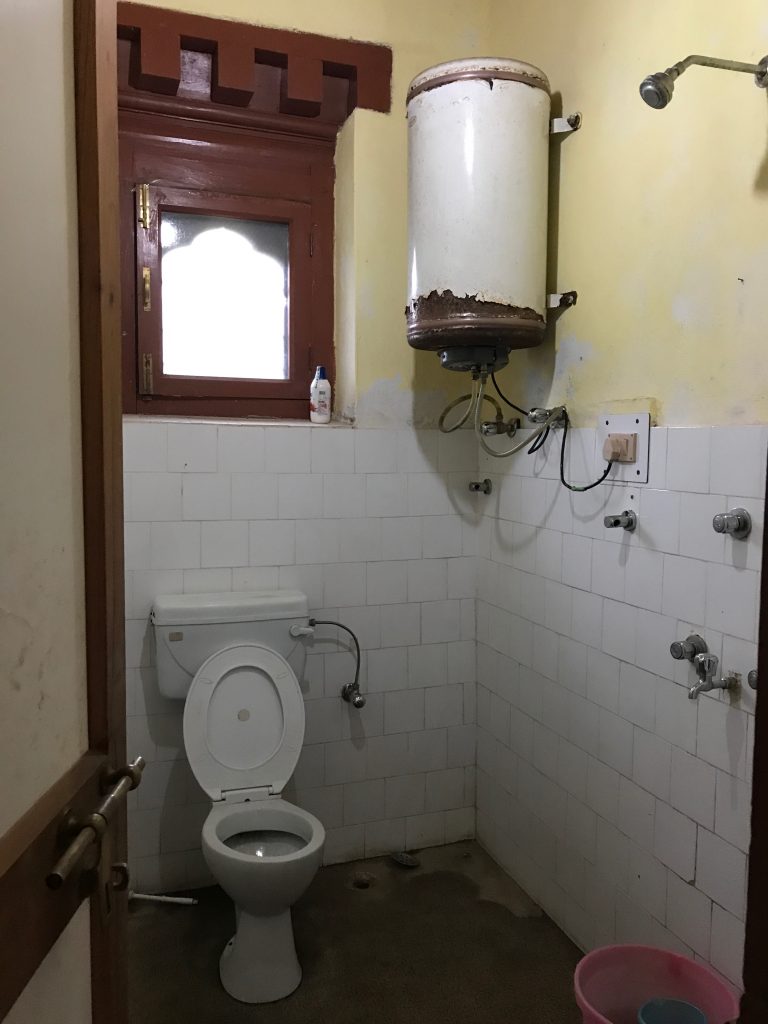
The main issue, however, was a pervasive smell of mold. It was hard to pinpoint the source. The walls seemed to have some rising damp—but then they weren’t damp to the touch. The bedclothes were distinctly moldy—but were they enough to account for all the smell of mold in the house?
We were all exhausted. I announced that I would pull out a sleeping bag and sleep on the floor of the main room, where the mold seemed least strong. Jeremy and Zoë joined me. James went off to sleep in a bedroom he thought was adequate. The dogs howled, as promised, but not so much that we couldn’t sleep.
